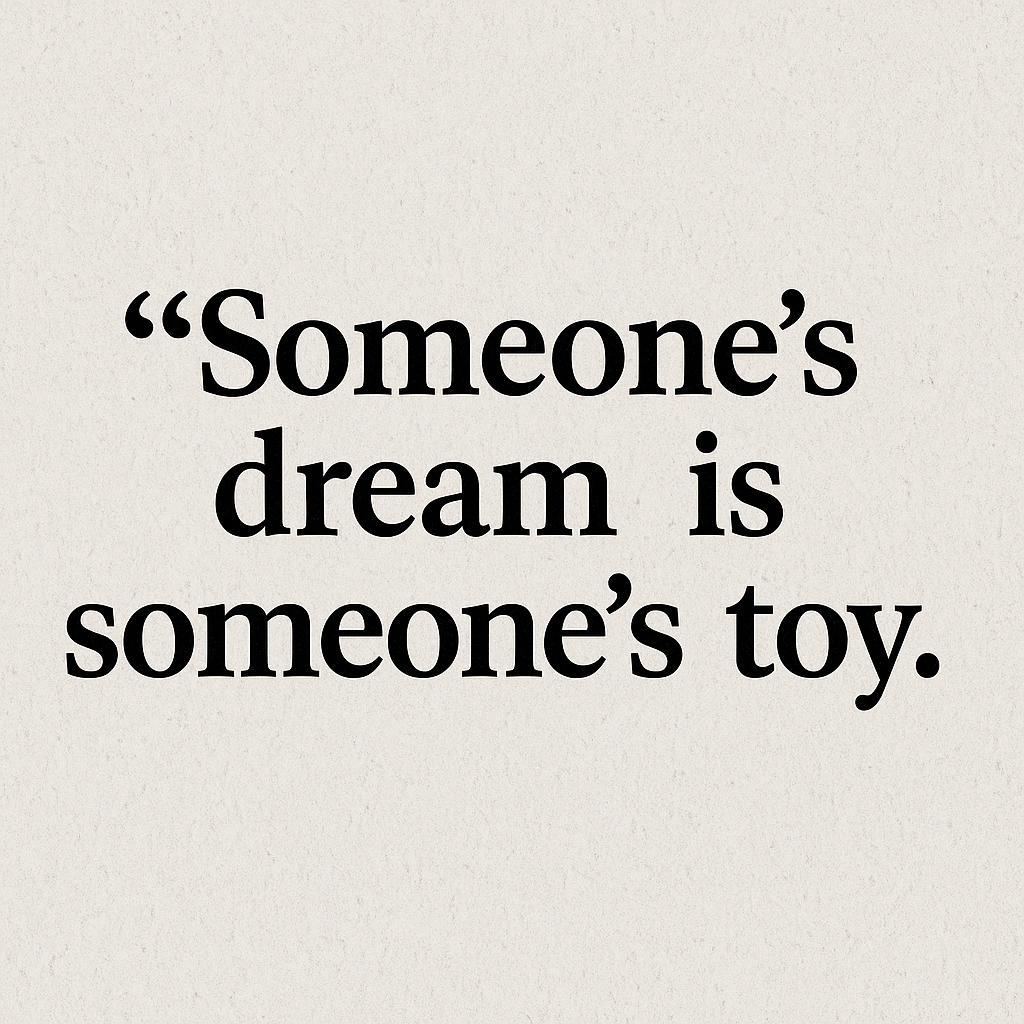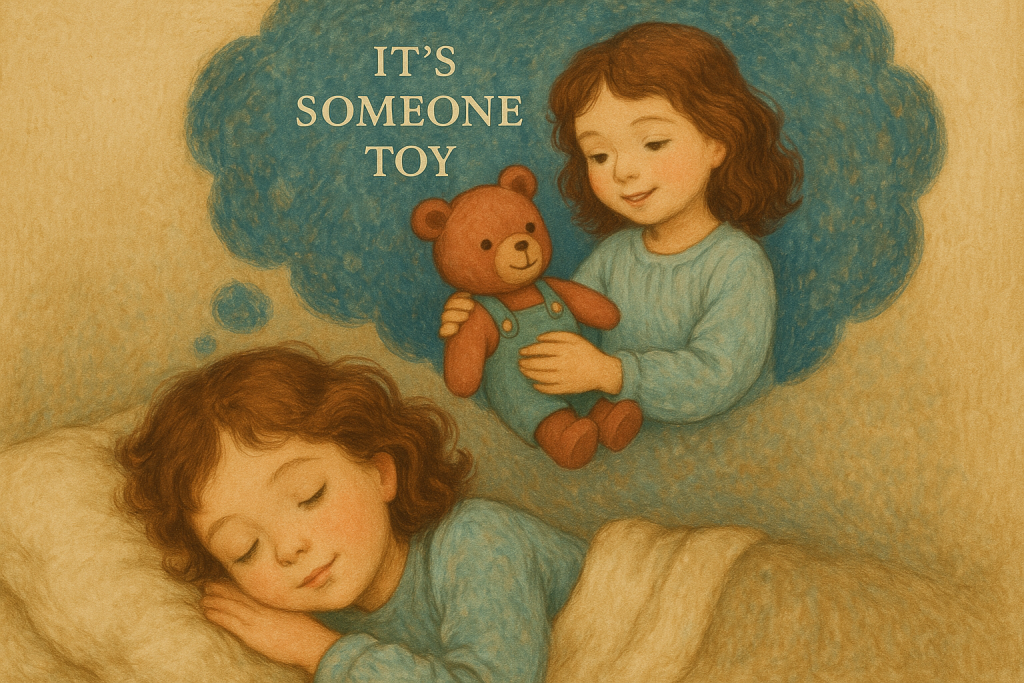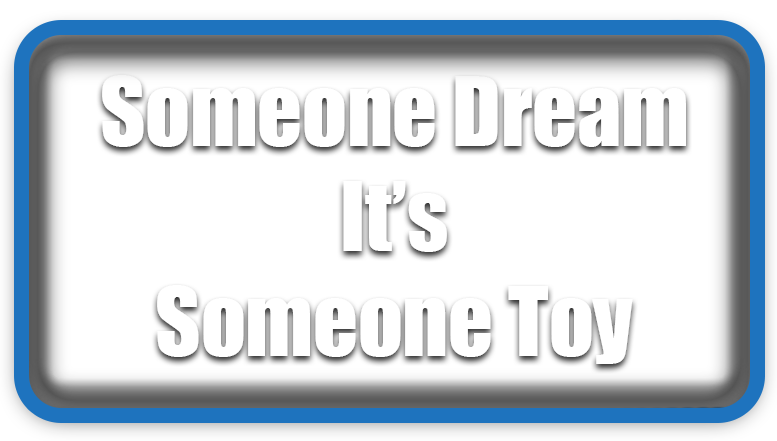⏲️ Estimated reading time: 6 min
Someone’s Dream, Someone’s Toy: Understanding Life’s Unfair Balance. In life, what one person dreams of achieving may already be another person’s discarded toy. This article explores ambition, desire, gratitude, and perspective, showing how value shifts depending on where you stand in life’s journey.
Have you ever noticed how the same object, opportunity, or relationship can hold completely different meanings depending on who looks at it? For one person, a luxury car is the culmination of years of hard work a dream come true. For another, it is just another vehicle in their collection, something they might even get bored of and replace next year. This striking contrast is what we explore through the idea: “Someone’s dream is someone else’s toy.”
This phrase is more than just a poetic observation; it is a mirror held up to society’s imbalance of resources, desires, and values. What one longs for, another takes for granted. In today’s world of endless comparison and social media displays, understanding this difference is key to cultivating gratitude, contentment, and realistic ambition.
In this article, we will dive deep into this philosophy, unravel its psychological and social implications, and learn how we can use it to transform our mindset.
The Meaning Behind the Phrase
At its core, the phrase “Someone’s dream is someone’s toy” reflects the subjectivity of value. Dreams are shaped by scarcity, desire, and need. Toys, on the other hand, symbolize abundance, excess, and even disposability.
- For the dreamer: The object holds immense emotional weight, symbolizing success, freedom, or happiness.
- For the owner: The same object might be ordinary, no longer carrying the emotional spark it once had.
This discrepancy is not limited to material possessions it extends to relationships, careers, and lifestyles.

Real-Life Examples
1. The Luxury Car
For a young professional, owning a BMW M4 might represent years of hard work and a lifelong goal. For a millionaire, however, it could simply be one of ten cars parked in the garage, used occasionally for fun drives.
2. Travel Dreams
A backpacker might save for years to visit Paris, seeing it as the ultimate adventure. Yet, for a local Parisian, the Eiffel Tower is simply part of the skyline something they pass on their way to work.
3. Careers and Jobs
To one person, getting hired at Google is a dream career. To another who already works there, it may just feel like “another job,” with its own stress, deadlines, and office politics.
4. Relationships
For someone single and longing for love, a happy relationship is a dream. For others who have been in long-term relationships, it can sometimes feel routine, even unappreciated.
Why This Happens: The Psychology of Desire
Desire is born from lack. What we don’t have seems more valuable. Once we acquire it, the emotional high often fades, and we adapt to our new reality. Psychologists call this phenomenon hedonic adaptation our ability to quickly return to a baseline level of happiness after a positive or negative event.
This explains why the car you once dreamed of doesn’t feel as special after a year, or why the new phone you craved soon becomes “just a phone.”
The Role of Social Media
Platforms like Instagram and TikTok magnify this truth. We constantly see others flaunting their “toys” luxury lifestyles, unfamiliar vacations, or perfect relationships. What we may see as unreachable dreams are often just casual snapshots in someone else’s life.
The problem is comparison. When you measure your dreams against someone else’s toys, envy and dissatisfaction can creep in.
Lessons We Can Learn
- Gratitude
Instead of focusing on what you don’t have, focus on what you already own. Remember, what you see as “ordinary” might be someone else’s dream. - Perspective
Ask yourself: Why do I want this? Is it because it truly matters to me, or because I’ve been influenced by others? - Contentment vs. Ambition
It’s okay to dream big, but balance ambition with contentment. Otherwise, you risk always chasing the next “toy” without ever feeling fulfilled.
How to Apply This Mindset in Daily Life
1. In Relationships
Cherish the people around you. The partner, family, or friends you sometimes overlook might be the dream of someone who feels lonely.
2. In Careers
Appreciate your skills and opportunities. The job you find stressful might be the exact position someone else is desperately applying for.
3. In Material Possessions
Look at your home, phone, or car with gratitude. Even if they feel ordinary, they may represent luxury in another person’s eyes.
4. In Personal Growth
The knowledge or talents you take for granted could be the dream of someone still searching for direction or education.
The Balance Between Dream and Toy
Life is about perspective. You may be holding a toy that once was your dream. At the same time, someone else might be dreaming of what you now consider ordinary. Recognizing this balance helps us stay humble when we own “toys” and stay hopeful when we pursue “dreams.”

When Dreams Become Toys
There’s an important life cycle in this concept:
- A dream inspires effort.
- Once achieved, it becomes a toy.
- Over time, the toy may lose its shine.
- A new dream is born, starting the cycle again.
This cycle is not negative it’s part of human growth. The challenge is to manage it with mindfulness so we don’t get stuck endlessly chasing without appreciating.
Philosophical Reflections
Thinkers throughout history have warned about chasing illusions:
- Buddhism teaches that attachment to desires leads to suffering.
- Stoics emphasized valuing what we control, not envying what others own.
- Modern minimalism suggests joy is found in less, not more.
When we understand that dreams and toys are relative, we begin to step away from comparison and closer to inner peace.
The phrase “Someone’s dream is someone’s toy” is both a reminder and a warning. It reminds us to value what we have, and warns us not to lose ourselves in endless desire. Each of us stands in both positions at different points in life we dream, we achieve, we move on.
The key is gratitude. When you are grateful, your toys don’t lose value, and your dreams become more meaningful.
🔔For more tutorials like this, consider subscribing to our blog.
📩 Do you have questions or suggestions? Leave a comment or contact us!
🏷️ Tags: life philosophy, gratitude, ambition, hedonic adaptation, psychology of desire, life lessons, relationships, minimalism, mindfulness, self-improvement
📢 Hashtags: #Gratitude #LifeLessons #Philosophy #Mindfulness #Ambition #Dreams #Motivation #Minimalism #SelfImprovement #LifeBalance
Only logged-in users can submit reports.
Discover more from HelpZone
Subscribe to get the latest posts sent to your email.

